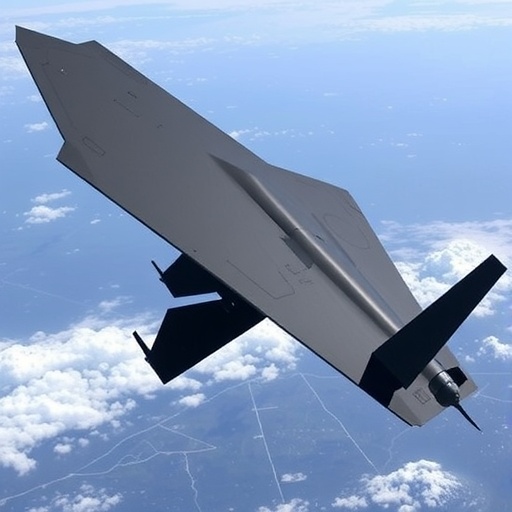The Korea Research Institute of Standards and Science (KRISS) has made impressive strides in the realm of stealth technology with its recent development of core Radar Stealth technologies completely localized within South Korea. For years, such technologies have been shrouded in secrecy and classified as national strategic military assets, making them nearly impossible to acquire through foreign sources. This achievement not only represents a technological milestone for KRISS but also sets a foundational stone for the establishment of stealth weapon systems in Korea, systems that have often faced strict import regulations due to national security concerns.
As global military dynamics evolve, the race to deploy advanced weapon systems has intensified, highlighting the necessity of stealth capabilities. Radar stealth technology plays a crucial role in this arena; designed to absorb or deflect electromagnetic waves, it serves as a shield against enemy radar detection. Such technology is critical for maintaining both operational secrecy and military autonomy. The challenge, however, lies in the restrictions placed on the importation of certain technologies, particularly in software and associated testing equipment, emphasizing the urgency for indigenous development.
Amid these challenges, KRISS has unveiled two pivotal innovations: the Frequency Selective Surface (FSS) design software and an electromagnetic wave evaluation system for radomes. These innovations mark a groundbreaking achievement, as they are entirely developed using domestic technology, covering every stage from design and prototyping to performance testing, thus eliminating reliance on foreign solutions. This paradigm shift is anticipated to significantly impact South Korea’s self-sufficiency in advanced radar and stealth technologies.
Radomes serve as critical structural enclosures designed to protect radar and antenna systems from environmental factors. These geometrically intricate structures ensure that electromagnetic waves pass through with minimal interference while shielding sensitive systems from harsh weather and physical damage. In defense applications, radomes face extreme conditions, including high thermal loads and shock from rapid movement, necessitating precise design to meet stringent performance criteria such as high electromagnetic transmittance and stability.
The FSS within a radome functions as an intelligent filter, selectively allowing or reflecting electromagnetic waves at various frequencies. To optimize the performance of this system, powerful electromagnetic simulation software is essential. However, existing commercial software is prohibitively expensive, often costing over KRW 100 million (approximately USD 75,000) for individual licenses, along with substantial annual maintenance fees. The financial barriers associated with such software have historically hindered domestic developments in this area.
Breaking the cycle of dependency on high-cost tools, KRISS has developed a novel FSS design software that utilizes artificial intelligence combined with advanced parallel computation techniques. This tool dramatically enhances design speed—by more than fifty times compared to traditional methodologies—thus enabling rapid and efficient analysis of multilayer composite radome structures. Such advancements in speed and capability make it far easier for engineers and researchers to innovate within the field of radar technology.
Moreover, another highlight of KRISS’s development is the establishment of an electromagnetic wave evaluation system, allowing for in-house testing and optimization of radomes. Traditionally, electromagnetic performance assessments would take a considerable amount of time to complete—exceeding a month—due to the rigorous standards imposed on defense-grade radomes. Today, with the application of AI technology, testing can occur over five times faster than before, greatly reducing both the duration and the costs associated with bringing radomes to operational readiness.
These innovative technologies have undergone rigorous collaborative research across four distinct KRISS research groups, underlining the institute’s comprehensive approach to stealth technology development. The research has been formally transferred to Korea Electrotechnology Research (KER), a key player in the domain of advanced defense weapon systems and precision electromagnetic equipment. This technology transfer, valued at 500 million KRW, symbolizes an important milestone and was formalized in a ceremony that took place at KRISS on August 5.
Dr. Hong Young-Pyo, the Head of the Electromagnetic Wave Metrology Group at KRISS, articulated the broader implications of their newly developed technologies. He acknowledged that while initially aimed at defense applications, the innovations possess immense promise beyond the military sphere, with potential uses in industries such as mobility, maritime navigation, and aerospace.
The impact of this pioneering research was recently articulated in an article published in the esteemed IEEE Transactions on Microwave Theory and Techniques, a leading journal in the electromagnetics field. This publication not only underscores the academic credibility of KRISS’s findings but also broadens the conversation around the viability of local developments in advanced technologies that have traditionally been seen as the domain of dominant global military powers.
In parallel with the advancements, KRISS has sought to protect its intellectual property by filing patents for the design software and the measurement technologies developed during this initiative. This step ensures that the breakthroughs attained will remain safeguarded, providing South Korea with a competitive edge in the continuously evolving landscape of defense technologies.
As the global landscape evolves into an era where stealth capabilities increasingly dictate military effectiveness, KRISS’s commitment to indigenous development offers a fresh perspective on national security. Their recent advancements allow South Korea not only to enhance its military capabilities but also to assert itself within the ever-growing world of defense innovation. By creating self-reliant technologies, KRISS is setting a precedent for future developments in military technology, harmonizing innovation with national sovereignty.
The holistic integration of these technologies promises a transformative effect on South Korea’s defense landscape, enabling the nation to achieve milestones once believed to be unattainable. As military tensions continue to rise globally, South Korea’s strides in radar stealth technology may serve as a vital linchpin not just for its own defense mechanisms but also as an influential player in the broader context of international military strategies.
Subject of Research: Radar stealth technologies and their indigenous development
Article Title: Field-calibrated Integrated Optical Waveguide Electro-optic Probe with Segmented Electrode
News Publication Date: 18-Jul-2025
Web References: http://dx.doi.org/10.1109/TMTT.2025.3587043
References: IEEE Transactions on Microwave Theory and Techniques
Image Credits: Korea Research Institute of Standards and Science (KRISS)
Keywords
Radar Technology, Stealth Systems, FSS Design, KRISS, Electromagnetic Simulation, Defense Innovation, AI in Engineering, National Security, Indigenous Development.




